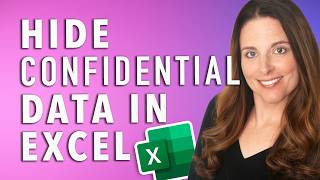5 Secret Ways to Detect Hidden Excel Sheets

In the realm of Microsoft Excel, the versatility and power it offers to users for managing data can sometimes make workbooks complex, especially with features like hidden or very hidden sheets. These sheets, often obscured from the casual observer, can contain sensitive or proprietary information, financial models, or merely data meant for internal organizational use only. Whether you're an Excel novice, a power user, or someone looking to ensure the integrity of data analysis, understanding how to detect these hidden elements is crucial. Here, we delve into the lesser-known techniques to uncover these concealed sheets, ensuring transparency, security, and efficient data management.
Understanding Hidden Sheets in Excel

Before we explore the methods to detect hidden sheets, it’s essential to understand what constitutes a hidden sheet in Excel:
- Hidden Sheets: These are sheets that are not visible when you open the workbook but can be made visible through the Excel interface with a few clicks.
- Very Hidden Sheets: These are more deeply concealed; they require the use of VBA (Visual Basic for Applications) to unhide.
Method 1: The Built-in Excel Interface


The first approach is the simplest for those not familiar with VBA:
- Right-click on any visible sheet tab at the bottom of the Excel window.
- Select Unhide from the context menu. This will open a dialog box.
- You’ll see a list of all hidden sheets. Select the sheet you want to unhide and click OK.
🌟 Note: This method only works for sheets that are simply hidden, not for very hidden sheets.
Method 2: VBA Code

For sheets that are marked as “very hidden,” we’ll need to turn to VBA:
Sub ShowAllSheets()
Dim ws As Worksheet
For Each ws In ThisWorkbook.Worksheets
ws.Visible = xlSheetVisible
Next ws
End Sub
To use this code:
- Press Alt + F11 to open the VBA editor.
- Insert a new module (Insert > Module).
- Paste the above code into the module.
- Run the macro by placing the cursor inside the macro and pressing F5.
This code will make all hidden sheets visible, including the very hidden ones.
👀 Note: This method will expose all sheets, so use it with caution if you’re not the owner of the workbook.
Method 3: The Name Manager Technique

The Name Manager in Excel provides another approach:
- Go to Formulas > Name Manager.
- In the Name Manager, sheets that are hidden or very hidden will still appear in the list.
- Use the provided information to identify hidden sheets.
This method does not unhide sheets but helps in detecting which sheets are concealed.
Method 4: Audit Workbooks for Hidden Sheets

Audit tools like XLSECURE or third-party Excel audit software can automatically scan for hidden sheets, along with other security settings:
- These tools can provide a comprehensive report on hidden elements within a workbook.
- They’re particularly useful for large organizational workbooks or when dealing with external data sources.
Method 5: Manual Inspection and Tools

Lastly, if you’re dealing with smaller workbooks or are not comfortable with VBA or advanced tools, manual inspection can still yield results:
- Use the Tab Color feature: Hidden sheets might not have a visible tab, but they still exist in the workbook structure.
- Check for references: If other sheets or named ranges reference cells on hidden sheets, this can be a clue.
Discovering hidden sheets in Excel can be vital for various scenarios, from auditing to recovering lost data or ensuring full control over workbook structure. The methods outlined above provide a spectrum of techniques from simple UI adjustments to sophisticated programming:
- Using the Excel interface for basic unhide functions is straightforward for everyday users.
- VBA macros offer powerful tools for more complex workbooks.
- Name Manager can serve as a diagnostic tool to identify hidden elements.
- Audit tools automate the detection process for larger, more intricate data environments.
- Manual inspection remains a valuable approach for those not keen on diving into technical methods.
What’s the difference between hidden and very hidden sheets in Excel?

+
Hidden sheets can be made visible through the Excel interface. Very hidden sheets, however, require VBA code or special tools to be unhidden, as they are more deeply concealed within the workbook’s structure.
Can I protect hidden sheets from being unhidden by others?

+
Yes, by protecting the workbook structure, users can prevent others from unhiding or modifying hidden sheets. This is done via the “Review” tab under “Protect Workbook.”
Is there a way to detect hidden sheets without using VBA?

+
Yes, through methods like using the Name Manager or audit tools, you can identify hidden sheets. However, VBA is often necessary for unhide operations involving very hidden sheets.
What are the security implications of hidden sheets?

+
Hidden sheets can contain sensitive information, formulas, or data that’s meant for organizational use only. If not properly secured, this can lead to unauthorized access or data leaks.
Can Excel detect hidden sheets automatically?

+
Excel itself does not automatically detect hidden sheets, but audit tools designed for Excel can scan for and report on hidden elements within workbooks.



